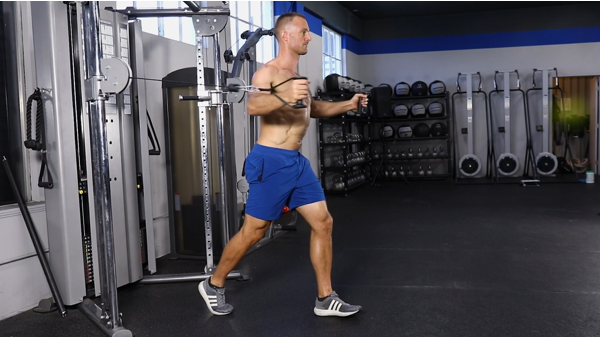Unlocking Chest Gains: Why the Cable Chest Fly Deserves a Spot in Your Workout

Strength training isn’t just about pushing the heaviest weights possible. It’s about smart training—targeting muscles effectively while minimizing injury risk. That’s where the cable chest fly shines. Unlike traditional bench presses or dumbbell flyes, which lose tension at certain points, the cable machine keeps your chest muscles engaged throughout the entire range of motion. If you’re looking for muscle isolation, continuous tension, and joint-friendly movements, this exercise belongs in your routine!
Why the Cable Chest Fly is a Game-Changer
Building a well-defined chest isn’t just about pressing heavy weights. Isolation movements like the cable chest fly help develop muscle symmetry, improve definition, and create that sculpted look. Here’s why it’s worth adding to your training:
- Constant Muscle Engagement – Unlike dumbbells, which rely on gravity and lose tension at the top, the cable machine provides consistent resistance, forcing your chest to work through the entire movement.
- Joint-Friendly Alternative – Bench presses can be tough on the shoulders, especially if you have mobility issues. Cable flyes reduce joint strain while still delivering a solid chest pump.
- Customizable for Targeted Training – Adjust the pulley height, stance, and range of motion to emphasize different areas of your chest. Whether you want to build overall mass or shape your upper chest, the cable machine allows precise control.
How to Maximise Your Cable Chest Fly
If you’re already doing this movement, great! But small tweaks can make a huge difference. Here are some key techniques to ensure you’re making the most of it:
- Keep a slight bend in your elbows – Locking out your arms reduces muscle activation and can put unnecessary strain on your joints.
- Control the eccentric phase – Slowly lowering the weight instead of letting it drop increases time under tension, which is key for muscle growth.
- Engage your core – This prevents excessive arching of the back and ensures proper form throughout the movement.
- Adjust pulley height strategically – Different heights target different parts of the chest. Low-to-high flyes emphasize the upper chest, while standard chest-height flyes hit the mid-chest.
Variations to Keep Your Training Fresh
Avoid plateaus by switching up your cable chest fly technique. Here are a few variations to challenge your muscles differently:
- High Cable Flyes – Set the pulleys at shoulder height to target the upper chest and shoulders more directly.
- Low-to-High Cable Flyes – Start with the pulleys at the lowest setting and bring the handles up in an arc to emphasize the upper chest and front delts.
- Standing Cable Flyes – This requires more core engagement than seated variations, adding an extra stability challenge while targeting the entire chest.
The Science Behind the Gains
The cable chest fly isn’t just another gym exercise—it’s backed by solid biomechanics. Research shows that constant tension training, like what you get with a cable machine, leads to better muscle activation compared to free weights alone. Plus, reducing shoulder strain means you can train consistently without worrying about joint pain slowing you down.
Ready to Build a Stronger Chest?
The cable chest fly is a must-have for any serious lifter. Whether you’re a beginner looking to build foundational strength or an advanced athlete fine-tuning your chest aesthetics, this movement delivers results. Stay consistent, focus on form, and don’t be afraid to experiment with variations to keep progressing.
Looking for premium gym equipment to take your workouts to the next level? Check out SuperStrong Fitness for high-quality cable machines, barbells, and gym flooring designed for serious lifters!




